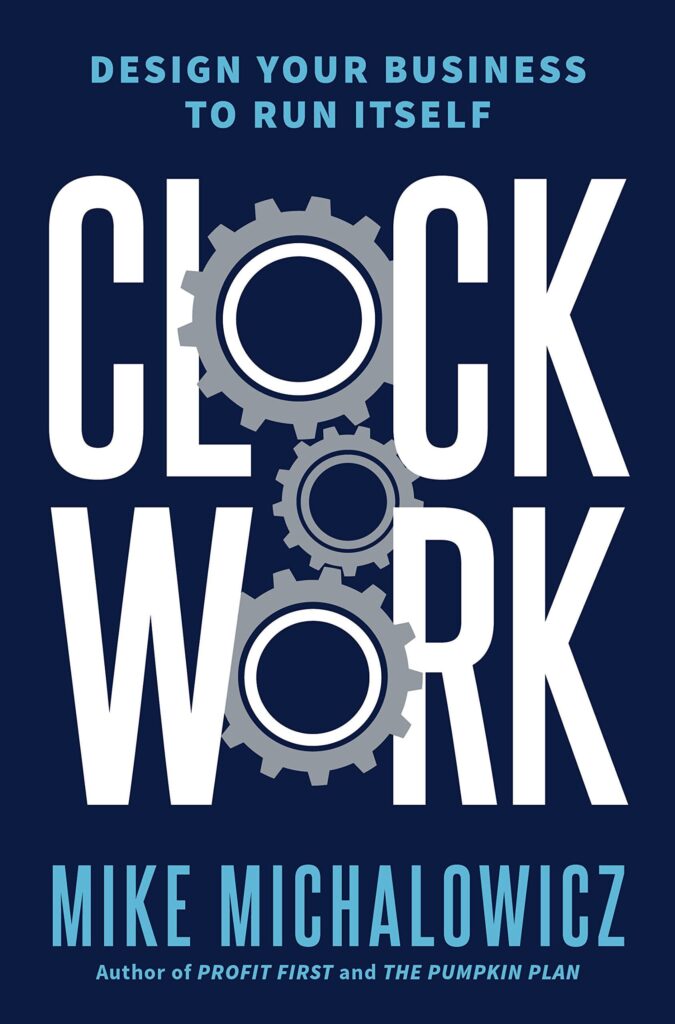Clockwork: Design Your Business to Run Itself
Mike Michalowicz

It’s possible. And it’s easier than you think.
If you’re like most entrepreneurs, you started your business so you could be your own boss, make the money you deserve, and live life on your own terms. In reality, you’re bogged down in the daily grind, constantly putting out fires, answering an endless stream of questions, and continually hunting for cash.
Now, Mike Michalowicz, the author of Profit First and other small-business bestsellers, offers a straightforward step-by-step path out of this dilemma. In Clockwork, he draws on more than six years of research and real life examples to explain his simple approach to making your business ultra-efficient.
Among other powerful strategies, you will discover how to:
Make your employees act like owners: Free yourself from micromanaging by using a simple technique to empower your people to make smart decisions without you.
Key Summary
“Clockwork: Design Your Business to Run Itself” is a book that focuses on teaching business owners and entrepreneurs how to design their business in such a way that it operates like a well-oiled machine. It emphasizes the importance of having systems, processes, and procedures in place to ensure that the business runs smoothly, even if the owner is not actively involved.
Takeaways
1. The importance of having systems in place to automate and streamline business operations.
2. The need to identify and prioritize the most critical tasks and delegate them to the right people.
3. The value of creating Standard Operating Procedures (SOPs) to document and standardize business processes.
4. The benefits of having regular check-ins and performance reviews to monitor the progress and performance of the business.
5. The need to create a culture of continuous improvement and encourage employees to suggest improvements to existing processes.
6. The importance of having a clear, concise, and actionable business plan.
7. The value of investing in technology to improve efficiency and productivity.
8. The need to regularly review and update business processes to ensure they remain relevant and effective.
9. The importance of maintaining a balance between automation and human involvement to ensure the business remains responsive and flexible.
10. The need to set realistic expectations and boundaries for the business to ensure sustainable growth and success.